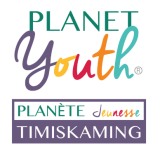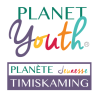WHY?
Our substance use rates are higher than the Ontario average, and as of the last few years, even lower-risk substances are causing high health risks due to the toxic drug supply (for example, fentanyl spiking).
Studies show that increasing protective factors and reducing risk factors in the lives of young people increases the chances they will grow up resilient and healthy – avoiding not only substance use problems, but also mental health issues, aggressive and criminal behaviour, failure at school, injury to themselves or others, and other risky behaviours. This also saves on costs to society in the long run.
In short, if we want healthy children, we need to take action.
The age that a person first uses alcohol, tobacco, cannabis, or other drugs, matters. One of the best ways for teens to prevent addiction is to delay the onset of first use.
We now know that any level of alcohol and drug use has significant risks for young people – they are much more likely than adults to suffer injury and harm, cause damage to the brain, do things they may regret, take more risks, and develop problems with substance use later in life.
Watch this video for more information: Age Matters
Substance use impacts everyone from various aspects such as mental and physical health, family breakdown, increased crime, and societal costs. We all pay educational taxes for example regardless of whether we have children in the school system or not.
We all have a responsibility to help make our communities better, and any person who parents, lives, works, or interacts with children and youth in any capacity has a responsibility to be a positive influence (protective factor).
No one is telling us what to do. Our partners at Planet Youth in Iceland have simply developed an effective survey and data processing method to let us know where the problems really are and where they stem from. It will be up to us here at the local level to recommend solutions based on that information.
HOW?
Traditional prevention is focused on education – specifically, teaching kids about the dangers of drinking and drugs.
Recognizing that youth outcomes are a direct reflection of the environments that they live and grow in, Planet Youth is focused on creating healthier community environments where children and youth have the supports they need to thrive.
This type of prevention, called “upstream” or “primary” prevention can look like:
- Free and affordable recreational opportunities
- After school clubs and programming
- Positive parenting
- Caring adult allies at school and in the community
- Having clear and consistent expectations and boundaries.
- Become informed
- Talk to your mayor and councillors
- Talk to your friends – spread the word
- Ask questions – email us at aeltermane@timiskaminghu.com
- Join the Local Action Team for your area! Contact us or check out our FAQ on Local Action Teams to learn more.
The Local Action Teams are community groups that work together to:
- Share the survey findings with their communities
- Create an action plan for what they see as the best responses to the findings, and
- Monitor the plans progress.
The Local Action Teams are based on the approximate catchment area of each high school. Each team receives a report with high quality data about what’s going on with young people in their catchment area.
Anyone with an interest in improving outcomes for children and youth in their local community is welcome to join a Team!
If you’re interested in joining a team, please reach out to the team lead:
- South Timiskaming
- Catchment area includes: Temiskaming Shores, Casey (Belle Vallée), Cobalt, Coleman, Harley, Harris, Hudson, Kerns, Latchford, Temagami, and Thornloe
- Contact: Erika Aelterman (aeltermane@timiskaminghu.com)
- Central Timiskaming
- Catchment area includes: Englehart, Earlton, Chamberlain, Charlton and Dack, James (Elk Lake), Hilliardton, and Brethour.
- Contact: Johanna Paradis (jparadis@englehart.ca)
- North Timiskaming
- Catchment area includes: Kirkland Lake, Gauthier, Larder Lake, Matachewan, Mcgarry (Kearns, Virginiatown)
- Contact: Krystal Oviatt (oviattk@timiskaminghu.com)
Crucial to this project has been centering the voice and experiences of our district’s youth.
Beyond the youth survey, ongoing youth engagement will help to inform the Local Action Plans.
Are you a young person looking to get involved? Please contact aeltermane@timiskaminghu.com to learn about current opportunities.
When children and families are going well, the whole community benefits.
By working together, our communities become stronger, healthier, and more supportive. Using an evidence-based approach to pinpoint which aspects of our communities need to be strengthened will save time and money. Primary prevention methods are really about creating an environment where everyone feels safe, cared for and valued.
WHO?
Planet Youth Timiskaming is coordinated by the Timiskaming Health Unit with guidance from a Steering Committee. While the Steering Committee provides guidance from a district-wide perspective, it is up to the Local Action Teams in South, Central, and North-Timiskaming to create a localized plan to address the risk and protective that youth are experiencing in their communities.
Anyone is welcome to join a Local Action Team and contribute to solutions for all children and youth!
Planet Youth is all-inclusive and for everyone.
The goal is to reduce risk factors and strengthen protective factors to improve the wellbeing of all children and youth in Timiskaming District.
THE SURVEYS
The survey is the main tool that will help us understand what life is like for teens in our communities. Starting in November 2023, the survey will be offered every two years to all grade 10 and 11 students who attend a high school in Timiskaming District.
The survey data is analyzed by our partners at Planet Youth in Iceland and results are shared widely with the goal of providing our communities with the information needed to develop interventions based on local data.
We require a benchmark of where things are in terms of risk and protective factors and evidence has shown this is the age group that works the best.
Once we know what the risk and protective factors of each community are, we can take steps to improve outcomes for all children and youth. Five years from now, the grade 10 and 11 students we survey will have been in grade 5 and 6 when the first survey was performed. We will be able to quantitatively measure how much our communities have improved over the 5 years.
The survey asks questions about substance use and frequency, as well as risk and protective factors within the four environments that have the greatest influence over youth: Family, Peers, School and Leisure Time.

